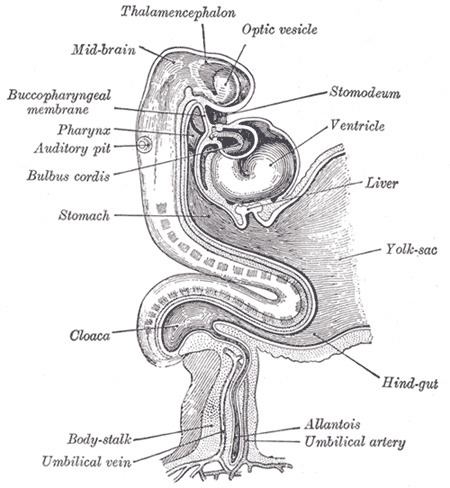Carnegie stage 9 Code TE E5.3.0.0.0.0.4 | Precursor surface ectoderm | |
 | ||
Latin Stomodeum, stomatodeum, stomatodaeum | ||
The stomodeum, also called stomatodeum or stomatodaeum, is a depression between the brain and the pericardium in an embryo, and is the precursor of the mouth and the anterior lobe of the pituitary gland.
Contents
Structure
The stomodeum is lined by ectoderm, and is separated from the anterior end of the fore-gut by the buccopharyngeal membrane.
This membrane is devoid of mesoderm, being formed by the apposition of the stomodeal ectoderm with the fore-gut endoderm; at the end of the third week it disappears, and thus a communication is established between the mouth and the future pharynx.
Development
The mouth is developed partly from the stomodeum, and partly from the floor of the anterior portion of the fore-gut.
By the growth of the head end of the embryo, and the formation of the cephalic flexure, the pericardial area and the buccopharyngeal membrane come to lie on the ventral surface of the embryo.
With the further expansion of the brain, and the forward bulging of the pericardium, the buccopharyngeal membrane is depressed between these two prominences. This depression constitutes the stomodeum.
No trace of the membrane is found in the adult; and the communication just mentioned must not be confused with the permanent isthmus faucium.
The lips, teeth, and gums are formed from the walls of the stomodeum, but the tongue is developed in the floor of the pharynx.
Etymology
It is from the Greek stoma- (mouth) and odaios (likeness), "which looks like a mouth".
